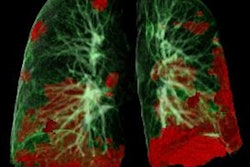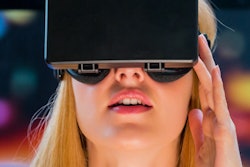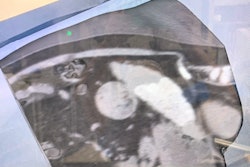
Artificial intelligence (AI) may be the overwhelming focus among imaging informatics presentations at RSNA 2020, but attendees will still be able to find content on areas such as clinical decision support (CDS), analytics, 3D printing, image-enabled patient portals, enterprise imaging, and more.
In August, the U.S. Centers for Medicare and Medicaid Services (CMS) postponed the requirement for clinicians to begin ordering advanced imaging studies using appropriate use criteria and decision support until 2022. That means that 2021 will be another year of testing and education for imaging CDS for Medicare patients.
With just over a year until CDS is required, RSNA 2020 offers an opportunity for attendees to explore their options, according to Dr. Nabile Safdar, chair of the RSNA Scientific Program Committee's radiology informatics subcommittee and vice chair of imaging informatics at Emory University School of Medicine.
"This RSNA is going to be the last chance for those that haven't already done so to check out CDS vendors," he said. "Hopefully people have already done that, but we've got another year for education and testing."
Although not as many as might have been expected, there were also some abstract submissions on CDS and its effectiveness for reducing inappropriate imaging utilization, Safdar said.
"But considering that at the time of abstract submission everybody thought that the implementation deadline would still be January 1, 2021, I was surprised that there weren't more," he said.
COVID-19, business analytics
 Dr. Nabile Safdar, chair of the RSNA Scientific Program Committee's radiology informatics subcommittee.
Dr. Nabile Safdar, chair of the RSNA Scientific Program Committee's radiology informatics subcommittee.COVID-19 analytics was also a theme among the submitted abstracts in imaging informatics, Safdar said.
"What I'm hoping is that some of the abstracts that were in there will be able to present additional sophisticated work they've done over the last several months, because the timeline was so compressed [with the pandemic and the abstract submission deadline]," he said.
The COVID-19 pandemic has obviously had a huge effect on the operations of radiology practices. A number of business analytics submissions for RSNA 2020 tried to map the effect of the pandemic on traditional radiology business key performance indicators such as imaging volume, turnaround times, and incidental findings, Safdar said. These analytics talks also reported on the effects of operational adjustments or interventions made by their practices in response to the pandemic.
"I think those would be really interesting for people to see," he said. "My personal experience is that our volumes are practically back to, or very close to, being back to normal at this moment. But that could change again as we go into the fall or winter, all depending on the situation."
3D printing, AR/VR
Abstracts continue to be submitted on the novel uses of 3D printing technology, Safdar said. An interesting battle has emerged between 3D printing versus augmented reality (AR) or virtual reality (VR) technologies.
"You can achieve a lot of that 3D spatial orientation and interpretation from both [3D printing and AR/VR], but what I was surprised to see is that there was ongoing activity in 3D printing, just as there was for AR/VR work," he said. "And the volume of the AR/VR abstracts increased, and the volume of the 3D-printing abstracts persisted. 3D printing is a technology that's still alive and well and in demand as printers get cheaper."
In 3D printing, most of the abstracts involved surgical planning applications, Safdar said.
Meanwhile, AR and VR technologies are increasingly being used for educational purposes, such as helping to get trainees ready for a certain procedure, Safdar said. A lot of work in AR involves interventional radiology applications, such as vascular mapping onto surface anatomy or mapping deeper anatomies onto surface anatomy.
"The technology is just becoming cheaper and more ubiquitous," he said.
Different applications
 More abstracts were submitted for RSNA 2020 on VR and AR technology.
More abstracts were submitted for RSNA 2020 on VR and AR technology.VR is going to be used more and more for education, whereas AR is more likely to be utilized in the operating suite or interventional radiology suite, Safdar said. He noted that 3D printing is currently much more widely used in places that have access to a 3D printer, however.
"[3D printing] can be done ahead of time and you can hand off the physical object to a surgeon or a proceduralist who can interact with it and even show it to a patient," Safdar said. "The trouble with 3D printing is that it's expensive sometimes and you have to figure out how to pay for it."
VR and AR technologies are being used, but they are still a relatively niche practice, he said.
Patient portals
In other trends, Safdar said there's going to be an opportunity at RSNA 2020 for imaging informatics to have a greater effect on the general clinical informatics world, particularly as electronic medical record (EMR) patient portals become more prevalent.
"I would love to see patient portals become image-enabled, and then to use AI to make that information, which is very technical and full of medical jargon, readily available and accessible to patients who otherwise wouldn't understand what's going on," he said. "I think we're going to see more and more of that going forward."
Although there weren't a lot of abstracts submitted on patient portals, Safar pointed out that the 21st Century Cures Act makes it mandatory for hospitals and health systems in the U.S. to provide patients with access to notes, reports, etc., through a portal or healthcare app.
"But the major EMR vendors still only provide reports and not images," he said. "I think there is an opportunity for vendors there, especially now as patients are looking at these and they're going to be making phone calls to understand them better."
Portability of imaging continues to be a huge issue in radiology and imaging informatics, according to Safdar.
"Although I didn't see a lot of scientific abstracts in that area, I think that's a general informatics trend that we should keep a close eye on," he said.
Enterprise imaging
In enterprise imaging developments, there's an increasing focus on not just image storage but also the workflow needed to support visible-light and dermatology and wound-care images, as well as cardiology and, in particular, point-of-care ultrasound (POCUS) images, according to Safdar.
"There's been such an explosion of point-of-care ultrasound throughout the enterprise that a system has not come up with a strategy to manage their enterprise imaging POCUS images and their visible-light images," he said. "They're probably dealing with those images being very much at risk."
Vendor-neutral archives (VNAs) have matured, but challenges remain for practices that have purchased POCUS systems and really don't have the experience to manage DICOM, worklists, or encounter-based workflows, Safdar said.
"The people that use these [VNAs] live in an EMR world; they're not thinking about the VNA world," he said. "They want a safe place to store their images, they want a nice worklist, they want it to work, and they want to stay in the EMR. And the integrations between VNA and EMR still tend to be a little bit immature for lack of experience. So I think there's opportunity there going forward."
Programming schedule
A variety of sessions on non-AI-specific imaging informatics topics are scheduled for the virtual RSNA 2020 meeting. You can also check out our AI preview.
Sunday, November 29
- 10:00 a.m.-11:00 a.m. -- Controversy Session: Radiology Report Substance, Structure, and Style -- Who's Right?
- 2:00 p.m.-3:00 p.m. -- Science Session: Radiation Oncology (Radiomics)
Monday, November 30
- 10:00 a.m.-11:00 a.m -- Education Session: Medical 3D Printing Regulatory and Quality Considerations
Tuesday, December 1
- 10:00 a.m.-11:00 a.m. -- Science Session with Keynote: Chest (Applications of AI and Radiomics in Lung Imaging)
- 3:30 p.m.-4:30 p.m. -- Education Session: Essentials of Noninterpretive Skills
- 5:00 p.m.-6:00 p.m. -- It's Not Only Price But Quality: Consumer Facing Radiology
- 5:00 p.m.-6:00 p.m. -- Hot Topic Session: Nonpulmonary Manifestation of COVID-19
Wednesday, December 2
- 10:00 a.m.-11:00 a.m. -- Education Session: The ABCs of Radiogenomics
- 10:00 a.m.-11:00 a.m. -- Hot Topic Session: Chest Findings of COVID-19
- 2:00 p.m.-3:00 p.m. -- Science Session: Physics (Image Analysis on COVID-19)
Thursday, December 3
- 8:30 a.m.-9:30 a.m. -- Education Session: MRI O-RADS
- 2:00 p.m.-3:00 p.m. -- Education Session: Radiology Informatics Mistakes and War Stories from the Physician Front Lines
- 3:30 p.m.-4:30 p.m. -- Hot Topic Session: Departmental Readiness for Disasters -- Lessons Learned from COVID
- 5:00 p.m.-6:00 p.m. -- Education Session: NIH Imaging Data Commons -- A Cloud-based Open Integrated Resource for Cancer Imaging Research
- 5:00 p.m.-6:00 p.m. -- Controversy Session: Peer Review and Peer Learning -- Are We Just Meeting Requirements or Are We Really Improving our Practices?
Friday, December 4
- 8:30 a.m.-9:30 a.m. -- Education Session: Mass Casualty Imaging and Workflow: Be Prepared!
- 8:30 a.m.-9:30 a.m. -- Special Interest Session: Improving Patient Experience through Human Design Thinking (Sponsored by the RSNA Public Information Committee)
- 10:00 a.m.-11:00 a.m. -- Hot Topic Session: Integrated Diagnostics -- Risk Predictions of Breast Cancer
- 3:30 p.m.-4:30 p.m. -- Hot Topic Session: Integration of Novel Blood, CSF, and Imaging Biomarkers for the Early Diagnosis of Alzheimer's Disease
- 3:30 p.m.-4:30 p.m. -- Science Session: Physics (Radiation Dose: Part I)
Saturday, December 5
- 8:30 a.m.-9:30 a.m. -- Science Session with Keynote: Physics (Image Reconstruction)
- 10:00 a.m.-11:00 a.m. -- Hot Topic Session: Impact of COVID on Workforce Resilience
- 2:00 p.m.-3:00 p.m. -- Education Session: Work Smarter, Not Harder: Reading Room Efficiencies and Ergonomics (Hands-On)
- 2:00 p.m.-3:00 p.m. -- Controversy Session: Policy is Culture -- Addressing Radiologist Productivity, RVUs, and Perverse Incentives
- 3:30 p.m.-4:30 p.m. -- Education Session: The RSNA Technology Stack for Semantics and Reporting: RadLex, RadElement, and RadReport
- 3:30 pm.-4:30 p.m. -- Hot Topic Session: Stroke Imaging -- How Recent Trials Are Changing Radiologists' Practices
All events are listed in Central time.




















